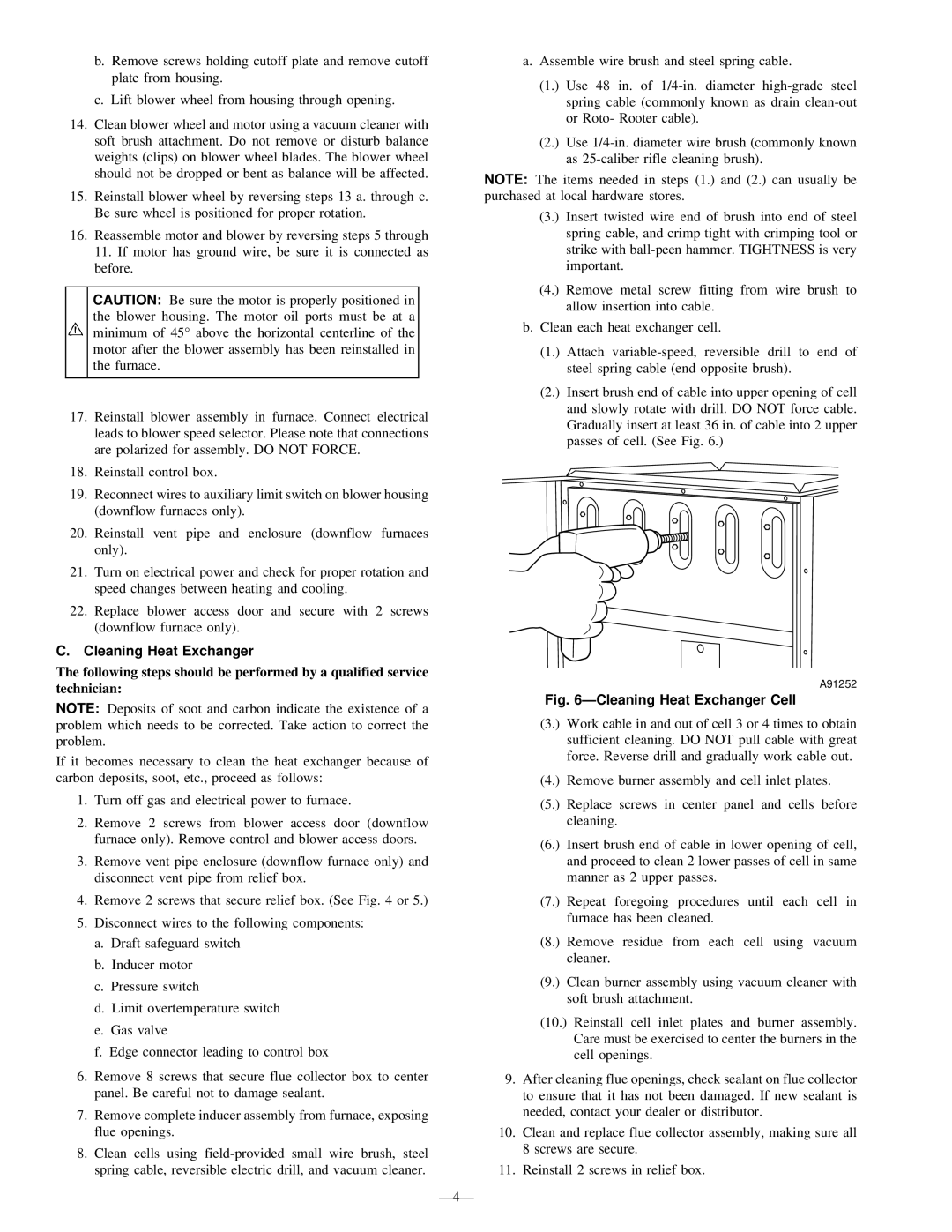394HAD, 396HAD specifications
The Bryant 394HAD and 396HAD are high-efficiency air conditioning systems designed to provide optimal comfort and energy savings for residential applications. Both units are engineered with advanced technologies that make them stand out in the competitive HVAC market.One of the main features of both the 394HAD and 396HAD is their impressive Seasonal Energy Efficiency Ratio (SEER) ratings. These models boast SEER ratings exceeding 16, which means they convert a greater portion of energy into cooling, resulting in lower energy bills and reduced environmental impact. The higher the SEER rating, the more energy-efficient the unit, making these models a smart choice for homeowners looking to minimize their carbon footprint.
Another significant characteristic is the variable-speed compressor technology employed in both models. This innovative feature allows the units to adjust their cooling output based on the specific needs of the home, leading to improved comfort levels and energy savings. The variable-speed operation provides a quieter performance, as the system operates at lower speeds during off-peak times, reducing noise pollution and enhancing indoor comfort.
The Bryant 394HAD and 396HAD models are also equipped with advanced refrigeration technologies, including a state-of-the-art coil design. These systems utilize enhanced aluminum or copper coils that improve heat exchange efficiency, maximizing the cooling performance. Furthermore, both models include a durable, weather-resistant cabinet that protects the internal components from harsh outdoor conditions, ensuring longevity and reliable operation.
In terms of convenience and ease of use, both units are compatible with Bryant’s smart thermostats and home automation systems. This integration enables homeowners to control their HVAC systems remotely, adjust settings, and monitor energy consumption, providing added comfort and peace of mind.
Lastly, the Bryant 394HAD and 396HAD are backed by a robust warranty program, reflecting the manufacturer’s commitment to quality and customer satisfaction. With a combination of cutting-edge technology, high efficiency, and user-friendly features, these air conditioning models are excellent options for achieving a comfortable home environment while also being mindful of energy usage.

